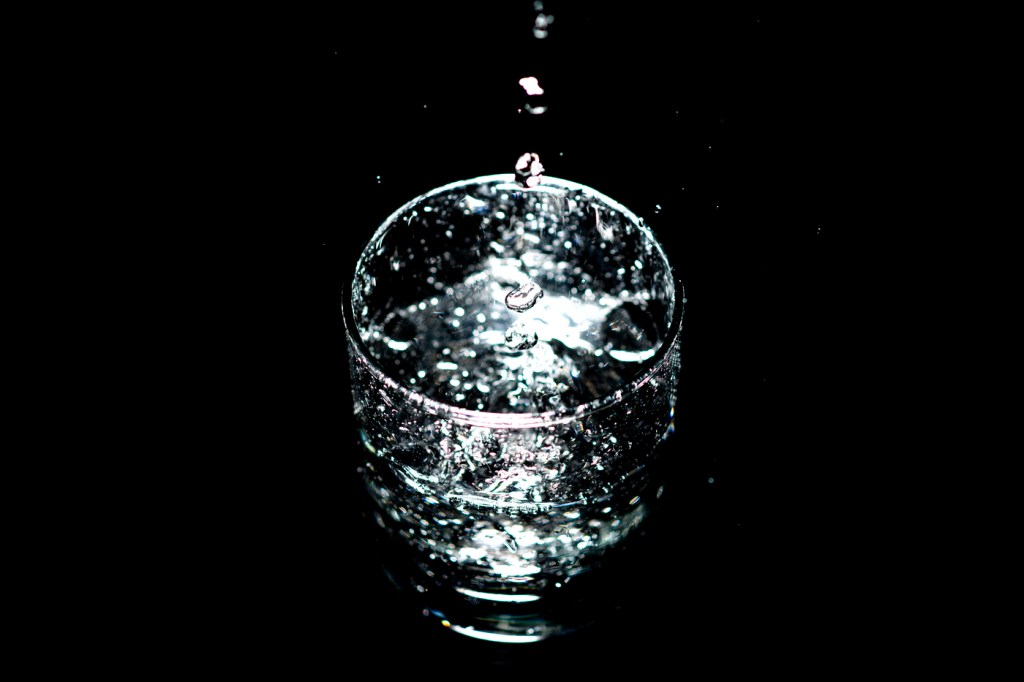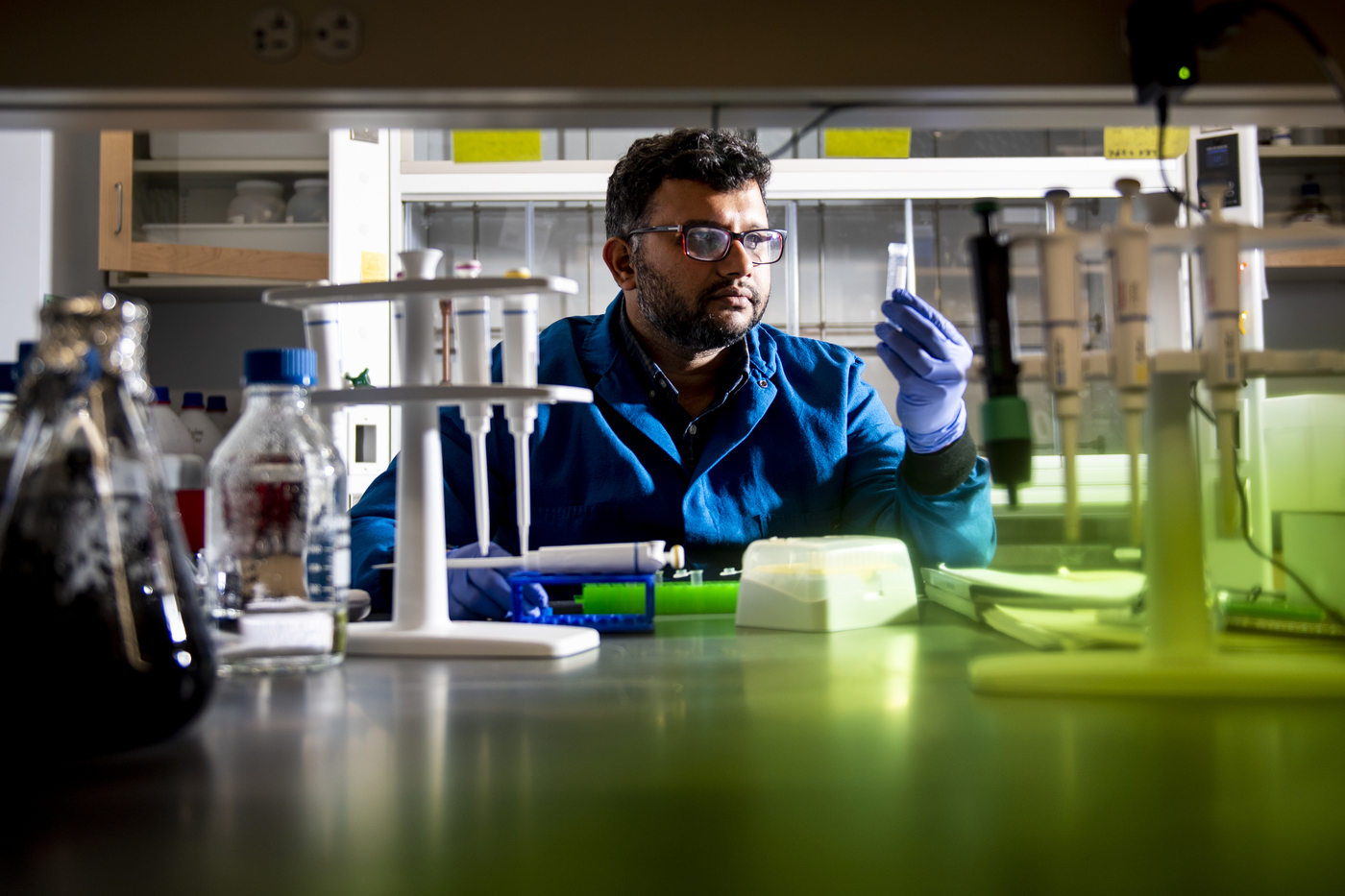Our drinking water was always full of microbes. Are the wrong ones thriving in the pandemic?

It’s been months. And from rats turning hangry because of coronavirus shutdowns in the U.S., to sea turtles reclaiming tourist beaches in Thailand, life has changed dramatically across the planet.
Zooming in where only a microscope can see, Northeastern researchers are trying to determine how the lifestyle changes caused by COVID-19 might be helping harmful bacteria grow in our drinking water.
Many buildings have been largely unoccupied for months, and their water supplies have been sitting relatively still. That stagnation means that water stays warm for longer periods of time. And because of those changes in the flow of water, the disinfectants that are added to limit microbial growth decay.
As people slowly repopulate large buildings for work, school, and other activities, the potential overgrowth of pathogens in the water of those buildings could put people at risk, says Ameet Pinto, an assistant professor of civil and environmental engineering at Northeastern.

The growth of microbes in water is a very natural process that occurs everywhere. At home, for example, if you open the tap in the morning, the typical concentration of microorganisms coming out of the faucet will be higher than it will be later in the day, when water has run through the pipes.
“It’s not unusual to see between 10,000 and 50,000 cells in every milliliter of drinking water,” Pinto says. “That’s just absolutely normal.”
The problem is when the wrong types of microbes—the ones that can make people sick—start gaining prominence inside the pipes, Pinto says, thinking of Legionella pneumophila and nontuberculous mycobacterium, pathogens that thrive when water stagnates.
To deal with microbes that grow over hours or days of stagnation, engineers flush the water from the plumbing system. Under normal circumstances, public water systems also use small amounts of disinfectants such as chlorine to limit the concentrations of those pathogens.
But how to handle potential microbial contamination in water that has stagnated for longer times is still very much an open question, Pinto says. If enough of these organisms start colonizing and forming a biofilm on the inner surface of the pipes, then ridding the plumbing system of those pathogens becomes much more of a challenge.

Kelsey Pieper is an assistant professor of civil and environmental engineering at Northeastern. Photo by Billie Weiss for Northeastern University
That’s partly because plumbing systems are complex networks of pipes that consist of different designs and materials, made specifically to meet the needs of each type of building.
“If you were to rip the wall of a building and look at all the plumbing behind it, it’s actually remarkably complex,” Pinto says. “We have not been able to generalize microbiological principles across complex buildings.”
Drastic changes in the demand for water within a building can also cause corrosion in pipes, valves, and other materials that make up its plumbing.
That corrosion can lead to higher levels of other contaminants, such as lead and copper, which can leach into the water, says Kelsey Pieper, an assistant professor of civil and environmental engineering at Northeastern who is working with Pinto.
For engineers like Pieper who specialize in how corroded materials influence water quality, the problem of prolonged stagnation is also a fairly new and complex challenge that COVID-19 has brought to the attention of researchers.
“It’s also thinking about the mains,” says Pieper, whose past research helped assess the implications of corrosion and lead contamination for drinking water in Flint, Michigan and upstate New York. “The water use patterns in these mains are going to be different, and that’s going to subsequently impact the building water quality.”
Pieper’s team has also been working with researchers from Virginia Tech, Purdue University, and Polytechnique Montréal to review the reopening guidelines and protocols that public health agencies are recommending to building owners across the U.S. and Canada.
Unfortunately, Pieper says, there isn’t enough data for researchers to assess those recommendations.
“We’re working through it to understand what’s the scientific basis behind all of this,” she says. “How do we reopen? Is it flushing? Is it a mix of flushing and disinfection? Is it disinfection only?”
To answer those questions, Pieper and Pinto also joined forces with Aron Stubbins, an associate professor of marine and environmental sciences at Northeastern. They recently secured funding from the National Science Foundation for their research.
The team is sampling water from Northeastern’s buildings and several residences across the Boston area in an effort to track the quality of water at each location, and how it might change as people begin repopulating large buildings.
The project is based on an existing initiative of Pinto’s lab, which has been conducting a comprehensive study of drinking water throughout Northeastern’s Boston campus. His team has been determining the genetic material of the microbes within those samples to investigate the diversity of organisms in water—harmful or not.
Pinto says that although he knows the gargantuan task of defeating the coronavirus is the top priority for the research community, the pandemic also offers a unique opportunity to study how the quality of water might change in schools, offices, and other types of large buildings under extreme situations.
Hopefully, he says, the team’s research will help other engineers recondition buildings during natural disasters, public health crises, and other future extraordinary circumstances.
For media inquiries, please contact media@northeastern.edu.





